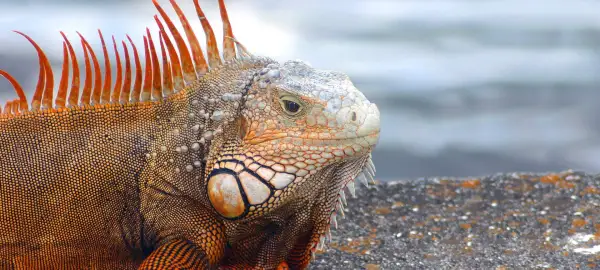Small Group Experiential Travel
Tour Code
EC15 Max Group Size
18 Start
Quito (UIO) End
Quito (UIO) Overnight In
Guayaquil, Quito, Cuenca, Riobamba, Ibarra, Banos, Galapagos, Ecuadorian Amazon, Lasso When To Go
Jun, Sep Activity Level
2 - Moderate? Tour Type
Cultural? - Overview
- Info & Inclusions
- Itinerary
- Map & Hotels
- Photos
- Dates & Prices
Highlights
- Guided colonial Quito tour
- Four-night luxury Galapagos cruise
- Exciting guided shore excursions
- Condor spotting in Cajas National Park
- Beautiful, colonial Cuenca
- Ingapirca Inca ruins
- Exciting Amazon experience
- Singles friendly (view options for single travellers)
Description
This 19-day Ecuador tour is an adventure that takes us into the Amazon Basin and amid the Galapagos Islands, two destinations that are so different both from each other and from any other location on the globe, they seem to belong to other worlds.
Professional tour guides lead us on a cruise through the Amazon where we have an opportunity to witness a land that is alive with a massive array of plant and animal species.
A flock of multi-coloured birds scattering in flight above our heads is just as much of an exotic sight as the many unique flowers that blanket the ground.
Some of the surreal land structures of the Galapagos will make us feel as though we momentarily stepped off the face of the Earth and into a land of imagination.
The crystal-clear waters seem to match the quality of the flawless beaches that radiate in the sun.
We're then off to see the ancient ruins of the Ingapica in the Canar Valley. The most important and intriguing structure is the Temple of the Sun because of the lack of mortar used in its stonework.
Experience the past meeting the present as we take a walk along the narrow cobblestone streets of Cuenca, once the site of an Inca settlement.
Professional tour guides lead us on a cruise through the Amazon where we have an opportunity to witness a land that is alive with a massive array of plant and animal species.
A flock of multi-coloured birds scattering in flight above our heads is just as much of an exotic sight as the many unique flowers that blanket the ground.
Some of the surreal land structures of the Galapagos will make us feel as though we momentarily stepped off the face of the Earth and into a land of imagination.
The crystal-clear waters seem to match the quality of the flawless beaches that radiate in the sun.
We're then off to see the ancient ruins of the Ingapica in the Canar Valley. The most important and intriguing structure is the Temple of the Sun because of the lack of mortar used in its stonework.
Experience the past meeting the present as we take a walk along the narrow cobblestone streets of Cuenca, once the site of an Inca settlement.
Price Includes
- Tour Leader services and local guide support (see Exclusions below)
- Breakfast and dinner daily (hotels and restaurants)
- All meals on ship.
- All transport, accommodation, sightseeing and entrance fees for sites noted as 'visited' in the detailed itinerary (including Galapagos park entry fee).
- Gratuities for local guides, drivers, restaurant staff, porters (except on the Galapagos cruise - see "Exclusions" below"
- Airport transfers for land & air customers and for early arriving/late departing land & air customers who also book their extra hotel nights through us.
Exclusions
- International airfare to/from the tour.
- Tour Leader gratuity, some lunches, drinks, personal items (phone, laundry, etc), departure taxes, domestic and international air taxes (if applicable).
- Airport transfers for Land Only customers.
- Optional trip cancellation insurance.
- Tipping: As an exception to our general policy regarding the inclusion of tips in our tour pricing, gratuities for the Galapagos cruise crew and Amazon lodge staff are NOT included in tour price (we have found that trying to pre-pay tips on your behalf is not practical, for a number of reasons). Accordingly we suggest, for satisfactory service, you allow approximately USD 125 (cash only) total per passenger for the Galapagos and USD 150 (cash only) for the Amazon.
Trip Info
- Seasonality and Weather:
This tour is offered throughout the year. Mainland: The cool and dry season runs from May to October; Outside of this time you will encounter warmer and perhaps rainy/misty conditions in the highlands but serious heat & humidity are only a consideration in the isles and Amazon.
Islands: Hot Season (warm-rainy), December to April. Average air temperatures range 25-33C on land and 23-26C in the water, ideal for snorkeling. It may rain occasionally in the afternoons for an hour or so. The ocean is generally calm due to the absence of the southeast trade winds.
The Cool Season (windy-dry), June to November. The cooler season sees a drop in temperatures 18-27C on land and 18-23C in the sea. Rainfall is low, though the islands may seem somewhat moist as an early mist covers the sky. Usually this burns off by mid morning. The seas are moderately strong; surge, choppy waters and some waves should be expected. - Transport and Travel Conditions:
Land transport throughout by private air-conditioned motor coach, 24-36 seats depending on ultimate group size (see 'group size'). Though we will have some full bus days, road travel is not particularly arduous as there are plenty of stops of interest. Roads are in good condition though winding on some stretches.
Baggage handling service is usually in Ecuador though you should be independent with your luggage, especially at airports.
Our difficulty rating of "Level 2" reflects the generally ambitious nature of our program, which features full days of travel and sightseeing, plenty of walking at sites that may be quite large and feature uneven/cobbled surfaces, stairs, heat, and some remote locations. You must also be prepared for short walks to dinner when we dine outside hotels, and to be fully-independent with your luggage in the event that porters are not available. While we don’t include any strenuous activities such as extended hiking or cycling, you must be steady on your feet and able to fully manage yourself and your belongings. And as always on any of our tours, if you rely heavily on a cane or any other mobility device, this tour would not be suitable for you.
Though most people are not seriously affected by altitude as we do not surpass 3000m/10,000 ft on this trip, we require that all participants submit a “Self-Assessment” form confirming their suitability for this journey. We suggest that you preview this form, which includes more detail regarding what you can expect on tour, by clicking the “Resources” tab at the top of this page.
Am I suitable for this tour? Please refer to our self-assessment form - Activity Level: 2
These are particularly busy tours that feature a lot of moving around, sometimes by train and short journeys on local transport. Walking tours of towns and cities are leisurely but you should be prepared to be on your feet for several hours. Some of our cultural trips that occur at high altitude and/or require greater independence with baggage handling (at hotels, airports, train stations) also fall into this category.
To learn more about the Activity levels, please visit our tour styles page. - Accommodation:
Well-located, heated/air-conditioned (you'll have only a fan in the Amazon), mid-range (3 star) hotels with en suite toilet and bath throughout.
The MV Galapagos Legend is one of the most comfortable boats sailing the Galapagos. With space for 110 passengers, the fully air-conditioned ship offers all the amenities of a cruise liner yet small enough for that intimate experience with nature. All cabins are booked in outside 'Junior Suite' class (view cabins on www.gogalapagos.com). Private bathrooms feature hot and cold water, shower, and a hair dryer. Snorkels & masks provided free. - Staff and Support:
Tour Leader and driver on mainland only; ship's crew and naturalist guides in the islands. Smaller groups on the Amazon portion may not be accompanied by our Tour Leader, but very capably guided and managed by the Amazon lodge staff. - Group Size:
Maximum 18 plus Tour Leader
View / Print Itinerary
- Day 1:Arrival in QuitoWelcome to Ecuador, where the equatorial sun bathes ancient volcanic peaks and the spirit of adventure beckons from every cobblestone street. We arrive in Quito, Ecuador's captivating capital, perched dramatically at 2,788m (9,200 ft) against the imposing backdrop of Pichincha Volcano.
This evening, as we settle into our hotel and gather with fellow travellers for our first meal together, we're embracing a city that has stood sentinel over the Andes for centuries. Quito's name derives from the Quitu people, who first established settlements here long before the Inca empire extended its reach northward.
Overnight in Quito
Included Meal(s): Dinner - Day 2:Quito - Fly to Amazon RegionWe take to the skies this morning, trading the cool Andean air for the warm, humid embrace of the Amazon basin. Our flight delivers us to a world where time moves differently, measured not by clocks but by the rhythm of flowing water and the calls of exotic birds.
The Napo Cultural Centre welcomes us from the banks of the Napo River, the Amazon's largest tributary in Ecuador and our gateway into Yasuni National Park—one of Earth's most biodiverse sanctuaries. We board traditional ecological canoes powered by outboard motors, beginning a two-hour journey downstream that feels like travelling back through evolutionary time.
As we glide along the chocolate-coloured waters, herons stand motionless as sculptures while kingfishers dart like jewelled arrows across our bow. Terns wheel overhead, and the dense green walls of the rainforest stretch endlessly in all directions. Upon arrival, we're greeted with a traditional Kichwa drink, our first taste of indigenous hospitality that has welcomed river travellers for generations.
This afternoon, we walk to the Napo's sandy beaches to witness one of nature's daily spectacles—an Amazonian sunset painting the sky in brilliant oranges and purples while the forest awakens with its nocturnal symphony.
PLEASE NOTE that your Amazon stay will not be accompanied by an Adventures Abroad Tour Leader, during which you will be very capably looked after by lodge staff & guides. Please also note that the itinerary description for the next few days in the Amazon is subject to change by lodge staff and is indicative only.
Overnight in the Amazon
Included Meal(s): Breakfast, Lunch and Dinner - Day 3:Amazon ActivitiesWe begin before the forest fully awakens, boarding our canoe as mist still clings to the water's surface. Our destination is one of the Amazon's most spectacular natural gatherings—a parrot clay lick where approximately 11 species of parrots, including brilliant macaws and diminutive parrotlets, congregate to consume essential minerals from exposed riverbank clay.
This morning ritual, dependent on weather and season, offers us front-row seats to a symphony of colour and sound as dozens of birds create a living kaleidoscope against the green backdrop. The clay provides nutrients these birds cannot obtain from their fruit and seed diet, making this site crucial to their survival and a privilege for us to witness.
We then proceed to the Interpretation Center "Kuri Muyu," where Kichwa women share the profound knowledge their ancestors have accumulated over millennia. Here, we discover how every vine, leaf, and bark serves a purpose in traditional medicine and daily life, understanding that the forest is not wilderness to be conquered but a pharmacy and hardware store perfected by nature.
This afternoon, we climb a 35-metre (115 ft) observation tower that lifts us into the rainforest canopy—a vertical journey into different worlds. At the top, we're eye-level with howler monkeys whose territorial calls can be heard 5km (3 mi) away, while toucans display their magnificent beaks and three-toed sloths move with deliberate slowness that has ensured their survival for 35 million years.
Overnight in the Amazon
Included Meal(s): Breakfast, Lunch and Dinner - Day 4:Amazon Activities ContinuedWe venture deeper into Kichwa territory today, visiting community projects that demonstrate how indigenous peoples have sustainably managed these forests for over 4,000 years. Our hosts share their worldview—a philosophy where humans are not separate from nature but integral threads in its vast web.
Walking among giants, we stand before ceiba trees that soar 60m (200 ft) skyward, their massive buttressed roots creating natural amphitheatres. These forest cathedrals have witnessed centuries pass, serving as landmarks and spiritual centres for generations of Kichwa families. We discover bamboo groves so dense they create their own microclimates, and vines thick as ship cables that provide highways for monkeys and pathways for countless other creatures.
As afternoon light filters through the canopy in golden shafts, we board smaller canoes for Anangu stream. This intimate waterway winds through primary forest largely untouched by outside influence, where every bend reveals new wonders. As darkness falls, we search for caimans—ancient predators whose eyes reflect our lights like rubies floating on black water.
The forest's nocturnal awakening surrounds us with a symphony that includes over 160 species of frogs, each contributing their unique voice to nature's oldest composition. Tonight, we understand why indigenous peoples consider the rainforest alive with spirits—here, every shadow moves and every sound tells a story.
Overnight in the Amazon
Included Meal(s): Breakfast, Lunch and Dinner - Day 5:Amazon - Fly to QuitoWe rise at 4:30 AM to participate in wayusa (optional), an ancient Kichwa ritual that connects communities with their ancestors and the forest spirits. This sacred tea ceremony, accompanied by traditional songs passed down through generations, energizes both body and soul while sharing wisdom that predates written history.
As we prepare for our return journey to Coca, the modern world feels simultaneously near and impossibly distant. The motorised canoe carries us back along the Napo, but now we see this mighty river through different eyes—understanding its role as a highway, a source of life, and a sacred waterway that has sustained indigenous communities for millennia.
For those seeking final aquatic adventures, tubing and regatta activities on the Napo provide playful farewells to this liquid landscape. Our flight back to Quito lifts us from the green infinity of the Amazon basin to the sharp-edged reality of the Andes, trading humid warmth for crisp mountain air.
Tonight in Quito, we carry with us the sounds, scents, and profound lessons of the rainforest—understanding that we've witnessed one of Earth's most critical ecosystems and the people who have been its guardians for countless generations.
Overnight in Quito
Included Meal(s): Breakfast and Dinner - Day 6:Quito: City TourWe step into the cobblestone streets of Old Quito this morning, entering a UNESCO World Heritage Site where Spanish colonial ambition created one of South America's most magnificent architectural treasures. Founded in 1534 on the ruins of an important Inca city, Quito became the artistic heart of the Spanish empire in the New World.
At the commanding Legislative Palace, elaborate murals chronicle Ecuador's tumultuous journey from indigenous kingdoms through colonial rule to independence. We discover the cathedral where Ecuador's founding fathers planned revolution, and stand in Independence Plaza where liberty was first declared in 1809—ten years before the rest of South America followed.
San Francisco Church astounds us with its massive scale and intricate stonework, but La Compania church truly takes our breath away. Here, Jesuit architects created what many consider the most ornate religious building in the Americas, with every surface covered in gold leaf that required seven tons of precious metal. The baroque facade alone took 160 years to complete, representing the accumulated wealth of an entire continent flowing through colonial Quito.
We then ascend Panecillo Hill, where the towering Virgin of the Apocalypse spreads her wings 45m (148 ft) above the city. From this vantage point, Quito spreads below us like a living map, with the snow-capped peaks of the Andes forming a magnificent amphitheatre around this remarkable capital.
This afternoon, we journey 22km (14 mi) north to the Equator line monument, where we stand with one foot in each hemisphere. The on-site ethnographic museum reveals Ecuador's incredible diversity—a country where 14 distinct indigenous nations maintain their unique languages, traditions, and worldviews.
Overnight in Quito
Included Meal(s): Breakfast and Dinner - Day 7:Quito - Otavalo Valley - IbarraWe journey north today into the Otavalo Valley, where the threads of history weave together indigenous resistance, Spanish colonialism, and modern economic success into a story unlike anywhere else in South America.
In the 14th century, when Inca expansion reached northward, the fierce Caraquis people inhabited these fertile valleys. For 17 years, these defiant warriors resisted Inca subjugation in battles that became legendary throughout the empire. The Spanish arrival brought different chains—a hacienda system forcing Otavalenos into 15-hour weaving shifts that nearly destroyed their culture.
But the Otavalenos transformed oppression into opportunity. Today, their weaving tradition forms the foundation of a lucrative industry that has allowed indigenous peoples to join the global economy while proudly maintaining their traditional values, language, and distinctive dress. We visit a traditional adobe home where guinea pigs—considered a delicacy for over 5,000 years—still scurry around the kitchen, representing one of the Andes' original sources of protein.
In Otavalo city, we wander through some of South America's most vibrant handicraft markets, where textiles in brilliant colours display techniques perfected over centuries. The quality and artistry evident in every weaving, carving, and piece of jewellery reflects a culture that refused to disappear.
Our hosteria near colonial Ibarra provides views of this "White City," so named for its red-tiled, whitewashed houses that climb the hillsides at 2,121m (7,000 ft). Founded in 1606, Ibarra has survived earthquakes, volcanic eruptions, and revolutions while maintaining its dignified colonial character.
Overnight in Ibarra
Included Meal(s): Breakfast and Dinner - Day 8:Ibarra - Avenue of Volcanoes & Cotopaxi - La CienegaToday we follow in the footsteps of the German scientist, Alexander von Humboldt, and rediscover what in 1802 he called the "Avenue of Volcanoes," a 325 km (202 mi) long valley between the major cordillera ranges. Massive and standing alone, the volcanoes provide brooding, snow-covered contrast to the green equatorial lushness. We see snow-capped summits, mystical brooks and rivers, terraced farmlands, small villages and fascinating cultures.
We’ll take the Pan-American Highway southwards and take a side road to discover the impressive volcanism, flora, and bird-life that the Cotopaxi national park protects. Whilst in the national park, we will visit to the Interpretation Center and the Limpiopungo Lake and also complete a short hike that will let us enjoy this natural wonder.
The area is also home to a number of exceptional haciendas, some of which date back to the 16th century. La Cienega Hacienda is located near the village of Lasso near the foot of Cotopaxi and has been witness to centuries of important events in the history of Ecuador.
Overnight at Hosteria La Cienega (Lasso area).
Included Meal(s): Breakfast and Dinner - Day 9:La Cienega - Pillaro - BanosToday we continue our journey to Banos. We will make a stop in Pillaro where we will visit a traditional workshop of masks that are used in the Pillaro Devil parade, an important cultural expression of the local indigenous people.
We arrive in Banos, a small town whose elevation gives it an extremely agreeable climate and the surrounding mountainsides are brilliant green against the white summit of the Volcano Tungurahua. The word Banos means "baths" and, as the name indicates, the highlight is the numerous hot spring baths in the area.
Today we have opportunity to visit the hot springs as well as wander the streets and market of this picturesque town. You can also hike into the nearby hillsides, along farmers' donkey trails through fields of corn, passion-fruit, and various other local products. A must-see is the Basilica dedicated to the Virgin of the Holy Water, credited with performing many miracles in the Banos area.
Overnight in Banos.
Included Meal(s): Breakfast and Dinner - Day 10:Banos - Devil's Bowl - RiobambaBefore departing Banos, we witness one of South America's most impressive waterfalls—the Devil's Bowl, where the Pastaza River plunges through a narrow gorge with thunderous power. The waterfall's name reflects indigenous beliefs that such dramatic natural features serve as portals between the physical and spiritual worlds.
At El Manto de la Novia (Bridal Veil Falls), we experience a cable car ride over the Pastaza River Canyon, suspended above roaring rapids that have carved their path through solid rock for millennia. The sensation of flying through this dramatic landscape provides perspective on the incredible forces that continue shaping the Andes.
After lunch, we travel through rolling farmland that flows over the high ridges of the Western Andes toward Riobamba, situated at 2,750m (9,035 ft). This charming Andean city, with its colonial architecture and cobblestone streets, serves as the gateway to Ecuador's highest peaks, including Chimborazo—the point on Earth's surface closest to the sun due to our planet's equatorial bulge.
Riobamba's impressive plazas and fascinating markets buzz with activity from indigenous people dressed in traditional clothing, creating a living museum where ancient customs continue alongside modern life. The Monasterio de las Conceptas and other colonial buildings reflect the city's importance during Spanish rule, when it served as a crucial stop on the royal road connecting Quito with Peru.
The city's small-town atmosphere intensifies as evening approaches, with the surrounding peaks creating a natural amphitheatre that makes Riobamba feel both protected and dramatically exposed to the raw power of the Andes.
Overnight in Riobamba
Included Meal(s): Breakfast and Dinner - Day 11:Riobamba - Ingapirca - CuencaToday our journey continues by road to Cuenca, detouring to visit the Archaeological Complex of Ingapirca, the best-preserved and most important Inca site in Ecuador. Though not on the same scale as, say, Machu Picchu, the ruins include a large oval construction once used for ritual and astronomical purposes. Just outside the ruins, the Museo Sitio de Ingapirca displays a skeleton, tools, and other artifacts recovered from the area. We'll also visit a local market, see the first church established in Ecuador, tour the historic town of Alausi, and enjoy views of Devils Nose Mountain.
Once the site of an Inca settlement, Cuenca today is considered Ecuador's most beautiful city. Its historical connection with Spain is marked by narrow cobblestone streets, quaint parks, and romantic plazas. Charming adobe houses, wrought iron balconies, and religious art treasures capture the spirit of centuries long past. Cuenca, almost hidden away in a southern valley, was isolated until recent times; it wasn't until 1960 that paved roads were built to Quito and Guayaquil. Today's Cuenca is surrounded by small villages whose citizens create intricately detailed jewelry, beautiful ceramics, and masterfully-designed hand-woven shawls.
You'll have time to wander the quaint streets in the compact centre of this charming town before reconvening for our evening meal.
Overnight in Cuenca.
Included Meal(s): Breakfast and Dinner - Day 12:Cuenca: Walking Tour & Museo del Banco CentralWe begin our leisurely walking tour at Parque Calderon, Cuenca's main plaza, where the rhythms of daily life unfold as they have for centuries. The old Cathedral, renovated for Pope John Paul II's 1985 visit, showcases the religious art that made colonial Cuenca famous throughout the Spanish empire.
We explore the Monastery of El Carmen and visit La Inmaculada Concepcion while strolling cobbled streets that echo with centuries of footsteps. Every corner reveals architectural details that reflect the wealth flowing through colonial trade routes—carved stone facades, intricate ironwork balconies, and courtyards designed around Spanish ideals of beauty and status.
This afternoon, we visit the Museo del Banco Central, where black and white photographs capture 19th and early 20th-century Cuenca in remarkable detail. The archaeological pieces and ethnographic dioramas reveal layers of history, from pre-Columbian indigenous cultures through Spanish colonisation to modern Ecuador.
We also visit a Panama hat factory, discovering the fascinating story behind these world-famous hats that actually originated in Ecuador. In 1835, Spanish entrepreneur Manuel Alfaro arrived in Guayaquil and recognised the economic potential of toquilla straw hats. He established production chains from straw plantations to weaver networks, exporting his hats through Panama—which was becoming an important centre for international trade.
Overnight in Cuenca
Included Meal(s): Breakfast and Dinner - Day 13:Cuenca: At LeisureToday belongs entirely to you in this enchanting UNESCO World Heritage city that Travel and Leisure magazine once named the best place in the world to retire. More than 8,000 US and Canadian citizens have made Cuenca their home, drawn by its perfect climate, low cost of living, and the timeless beauty of its colonial architecture.
Cuenca's compact historic centre invites wandering, with each street revealing new architectural treasures and hidden courtyards. The city's four rivers—the Tomebamba, Yanuncay, Tarqui, and Machangara—create natural boundaries that frame different neighbourhoods, each with its own character and history.
You might visit additional museums, explore local markets where vendors still speak Kichwa alongside Spanish, or simply find a plaza café where you can watch daily life unfold at its unhurried pace. The surrounding mountains create microclimates that keep temperatures comfortable year-round, making every day perfect for exploration.
Many travellers use this free time to purchase local crafts directly from artisans, understanding that every purchase supports traditional skills passed down through generations.
This is your day to absorb the rhythms of a city that has successfully balanced preservation with progress, creating a living museum where past and present coexist in remarkable harmony.
Overnight in Cuenca (due to the informal nature of the day, and for a break from the group meal dynamic, we don't include your evening meal today)
Included Meal(s): Breakfast - Day 14:Cuenca - Cajas National Park - GuayaquilToday we travel by road to Guayaquil via Cajas National Park.
The park contains hundreds of clear, cold lakes, streams, and rivers. Weather-permitting (which can be highly changeable at this altitude), the park can provide an excellent opportunity for us to hike the grassland of Paramo Region or visit a forest of polelypsis trees, the highest altitude tree in the world. Recently the park's management introduced llamas and alpacas as part of a breeding program to re-introduce these animals to the southern highlands. Keep your eyes peeled for the many bird species that make the park their home, especially for the silhouette of a soaring (and extremely rare) Andean Condor, which can sometimes be spotted here riding the thermal up-drafts.
We continue our descent toward the coast, stopping at a cocoa plantation to learn about cultivation and production of Ecuadorian chocolate, considered among the world's finest due to unique soil conditions and traditional fermentation techniques.
Our destination is Guayaquil, Ecuador's main port city and gateway to both Pacific beaches and the Galapagos Islands. Stretching along the Guayas River, the waterfront Simon Bolivar promenade showcases La Rotonda monument, celebrating the historic meeting between South America's great liberators.
Overnight in Guayaquil.
Included Meal(s): Breakfast and Dinner - Day 15:Guayaquil - Fly to the Galapagos / San Cristobal AirportToday you will say farewell to your Tour Leader and depart from Guayaquil to San Cristobal on a 2-hour flight. Upon arrival, passengers are picked up at the airport by our naturalist guides and taken on a ten-minute bus drive to the pier to board the M/V Galapagos Legend.
An archipelago of 12 large and several hundred smaller volcanic islands occupying a 4800 sq km (3,000 sq mile) area about 1000 km (620 miles) west of Ecuador, the Galapagos Islands have become one of the world's premier adventure travel destinations. Over the course of your visit, you'll enjoy up-close views of unusual, specially-adapted animals, plants and terrains including sea lions, tortoises, iguanas, land and sea birds, volcanic landscapes, unusual cacti and vegetation. Little has changed about the islands since Charles Darwin's visit in 1835 to "this little world within itself" inspired his first theories of evolution. Nearly the entire archipelago is a natural sanctuary where you'll have thrilling encounters with some of the world's last completely untamed wildlife that has never learned to fear the presence of humans.
We will be navigating the Galapagos on board the M/V Galapagos Legend, a 110-passenger luxury expedition ship totally converted in 2001 and recently renovated. The M/V Galapagos Legend has all-new passenger accommodations with 1800 sq m of social areas and was built with marine certified materials qualifying with Safety of Life at Sea specifications. All cabins are booked in "outside" Junior Suite cabins with plenty of space for luggage in the wardrobe closet. Private bathrooms feature hot and cold water, shower, and a hair dryer. Also aboard, a highly-trained crew, 24 hour physician, and naturalist multilingual guides. An auditorium for conferences, spacious social areas, dining room, 24 hour coffee bar, swimming pool and sun decks, observation platforms, cocktail bars, long distance calls, fully air-conditioned.
AFTERNOON - Interpretation Center & Tijeretas Hill (San Cristobal Island)
Dry landing (no need to step into water upon landing). The interpretation center is full of interesting information and offers the perfect overview to the formation of Galapagos, its significance in the world, threats and conservation efforts. Followed by a hike to Frigatebird Hill (Cerro Tijeretas) we will have great looks at both species of frigatebird, with the bonus of a beautiful view of the bay below.
Difficulty level: easy /moderate
Type of terrain: flat/stairs/rocky
Duration: 1-hour visit/1-hour walk
Return to ship for passenger welcome and briefing; there is a presentation of the crew. At this time a safety drill is practiced. Free time on board. After dinner a guide's briefing on next day activities in the auditorium.
* The cruise portion of this itinerary has been provided provided by the cruise operator and should be taken as guidance only. Last minute operation considerations and national park policies can result in alterations and deviations from this schedule, sometimes at late notice. Such changes are the prerogative of the cruise operator over which Adventures Abroad has no control.
Overnight Galapagos Cruise.
Included Meal(s): Breakfast, Lunch and Dinner - Day 16:Galapagos Cruise / Gardner Bay, Gardner & Osborn Islets (Española Island)Wet landing (you will have to step into shallow water and walk to shore - see your pre-trip notes for suggestions re footwear). One of the most stunning beaches in all of Galapagos, the long, white, sandy beach, lapped by turquoise waters is home to a colony of Galapagos sea lions, indifferent to the humans that walk amongst them. The Hood mockingbirds, endemic to this particular island, will be eager to inspect the visitors and satisfy their innate curiosity. Darwin’s finches may also join the throng including the reclusive warbler finch. We can also snorkel here from the beach, in the shallows of the bay.
Difficulty level: easy
Type of terrain: sandy
Duration: 1-hour walk / 1-hour snorkeling
Return to ship; lunch.
PM – Suarez Point (Española Island)
Dry landing. One of the highlight visits of the trip. Punta Suarez seems to have everything – a naturalist’s paradise. A slew of marine iguanas and sea lions greet us at the landing site from where our walk continues with close encounters of boobies, endemic lizards, gulls and even a dramatic blow hole. The oldest extant island in the archipelago it is our only opportunity to commune with the endemic waved albatross during their breeding season between April and December. With luck, we can watch their complex courtship display.
Difficulty level: demanding
Type of terrain: rocky
Duration: 2½-hour walk
Return to ship; Free time on board. Guides briefing on next day activities.
Overnight Galapagos cruise.
Included Meal(s): Breakfast, Lunch and Dinner - Day 17:Galapagos Cruise / Floreana IslandWet landing. A very short walk from the beach leads us to the famous Post Office Barrel. Claimed to have been first setup in 1793 by Captain James Colnett it remains the oldest functioning “post office” in the Pacific. The system was that whalers and fur sealers would leave addressed letters in the barrel to be picked up by homeward bound colleagues. In the spirit of maintaining tradition visitors today will often take letters and hand-deliver them in their home countries.
Difficulty level: easy
Type of terrain: sandy
Duration: 30-minute walk / 1-hour snorkeling
Return on board, lunch.
PM – Cormorant Point / Devil’s Crown / Champion (Floreana Island)
Wet landing. On arriving, the observant visitor will notice that olivine, a volcanic crystal, has proffered a subtle green hue on the dark beach. Our walk takes us past island-endemic Scalesia plants to a large, shallow, lagoon often inhabited by a variable number of shockingly pink greater flamingoes. We continue through a forest of palo santo trees to arrive at a powdery white beach, a nesting area of green turtles. As we paddle barefoot in the shallow water we will spot diamond stingrays and white-tipped reef sharks.This coral-sand beach marks the end of our trail, and we head back to the olivine beach we landed on, to swim or snorkel amongst sea turtles, reef fish, sea lions and, on a good day, white-tipped reef sharks. A small colony of penguins resides on Floreana and can sometimes be observed as well.
One of the favorite snorkeling sites in the islands. Devil’s Crown, an eroded volcanic cone, is home to an abundance of fish and marine animals. We will swim with big schools of yellow-tailed surgeonfish, salemas and creole fish and with luck may spot turtles, spotted eagle rays, parrotfish, and even hammerhead sharks! The jagged ëcrowní is a roosting area for boobies, noddies, tropicbirds, and frigates.
A truly magical place to snorkel. We would expect to see here green turtles, harmless white-tipped reef sharks, an impressive diversity and abundance of fish as well as some playful sea lions often approaching very close, itching to show off their prowess in the water. Champion Islet also happens to be the last remaining home of the island-endemic Floreana mockingbird which we may be lucky enough to see from our pangas.
Difficulty level: easy
Type of terrain: sandy & flat
Duration: 1-hour walk / 1-hour snorkeling
Overnight Galapagos cruise.
Included Meal(s): Breakfast, Lunch and Dinner - Day 18:Galapagos Cruise / Dragon Hill & Punta Bowditch (Santa Cruz Island)AM Dragon Hill
Arriving to a small lava dock our first encounters are with matine iguanas that belnd in with the dark rock. As we walk past large prickly pear cacti we arrive at one end of a long sickle-shaped beach with Dragon Hill standing in the distance. Our walk takes up o a circular path, past a shallow lake where flamigoes come to drink. Waders such as stilts, turnstones, and sandpipers work the muddy edges frenetrically looking for food as we continue inland to a dry, forested habitat where iguanas rest and burrow.
Difficulty level: moderate
Type of terrain: rocky
Duration: 2-hour walk
PM Punta Bowditch
Feel the indescribable feeling of being were no one else has. Relax on a powdery beach,
snorkel around turquoise water islets and hike beside salt pools and dried white corals.
Difficulty level: easy
Type of terrain: sandy
Duration: 30-min walk/one hour snorkelling
Overnight Galapagos cruise.
Included Meal(s): Breakfast, Lunch and Dinner - Day 19:Galapagos / Highlands Tortoise Reserve (Santa Cruz Island) - Fly to Quito - DepartureHighlands Tortoise Reserve (Santa Cruz Island)
In the central highlands of Santa Cruz Island we have our best opportunity to interact at close quarters with totally wild, Galapagos giant tortoises. A short walk among these huge, 600lb, reptiles will also offer the chance for more highland species, especially several species of the famed finches.
Difficulty level: easy
Type of terrain: flat & sometimes muddy
Duration: 45-minute drive / 1 ½-hour walk
Baltra Airport:
After the visit, passengers will be transferred to the airport for their return flight to the mainland.
Departure from Quito (if you are booking your own flights, please do not book anything from Quito that departs any earlier than 8pm).
BUEN VIAJE!
* PLEASE NOTE: As an exception to our general policy regarding the inclusion of tips in our tour pricing, gratuities for the ship's crew are NOT included in tour price. (We have found that trying to pre-pay tips on your behalf is not practical, for a number of reasons). Accordingly, we suggest that you allow approximately USD 125 total per passenger for satisfactory service.
Included Meal(s): Breakfast
Regions Visited: South America
Countries Visited: Ecuador
Countries Visited: Ecuador
*The red tour trail on the map does not represent the actual travel path.
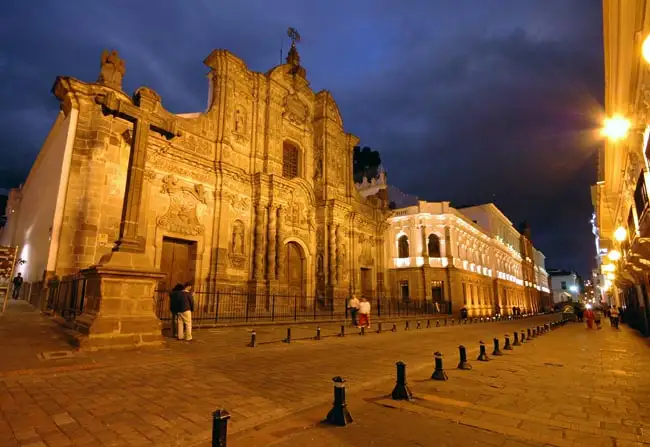
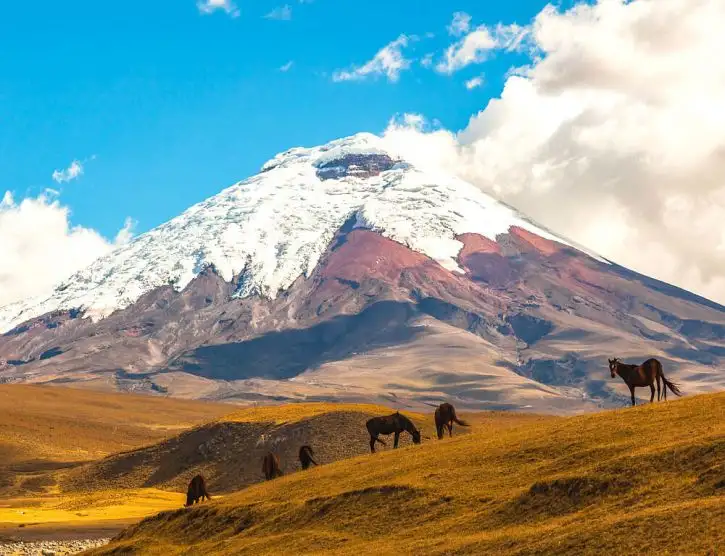
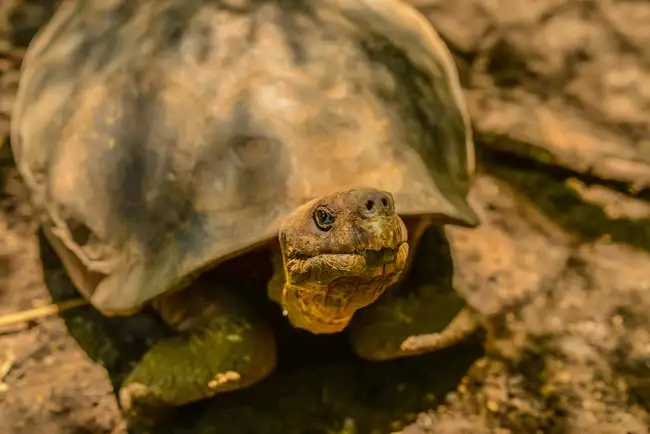
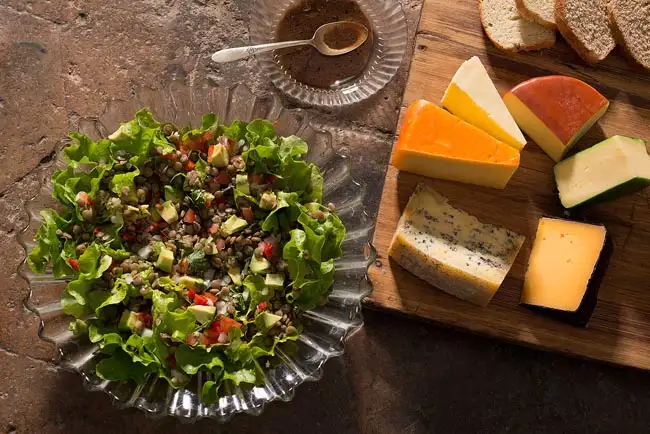
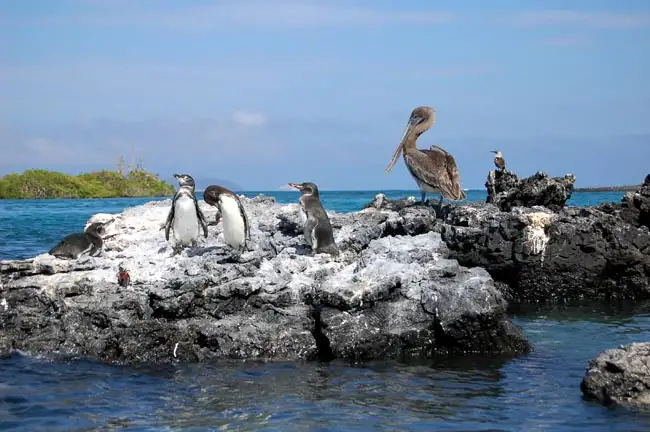
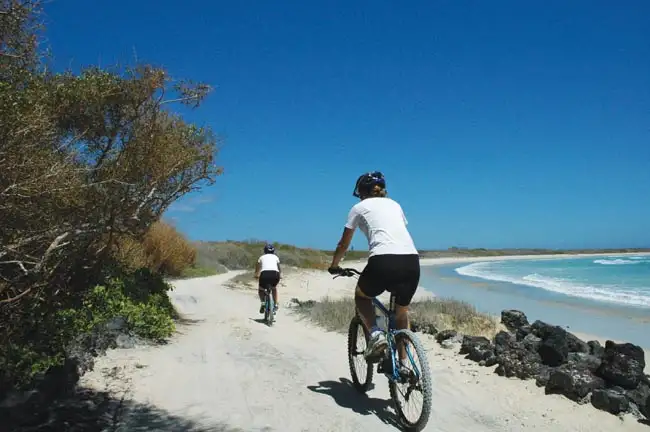
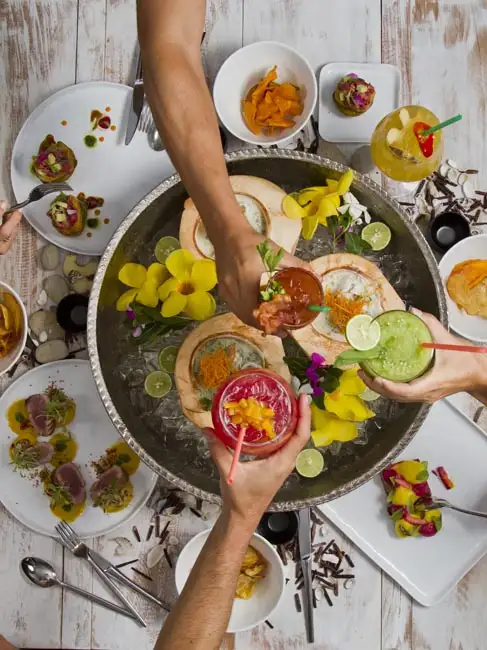
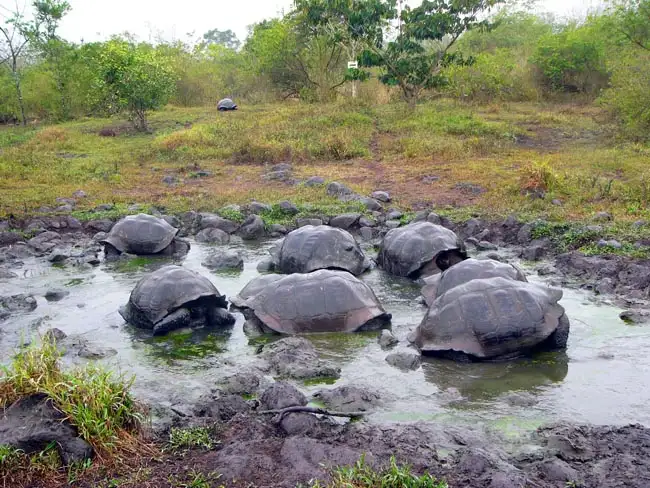
Excellent
Overall Rating
4.7
Extend Your Trip
This tour is part of a series that can be upgraded to make for a longer trip.
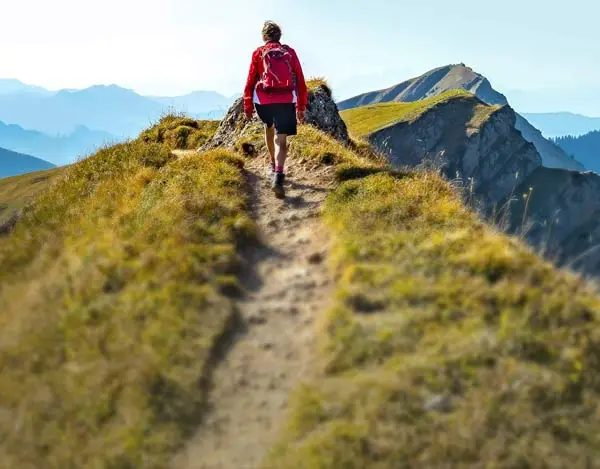
Fast and easy
Book This Tour
Book your unforgettable adventure today! For any questions or advice, don't hesitate to contact us.
Have questions?
1-800-665-3998
- Final payment: Due 90 days prior to departure.
- Deposit: A non-refundable $1000 USD Deposit is required at booking, covering the 'Land Only' cost, including all internal flights (taxes listed separately)
- Optional Single Supplement: $3040 USD (number of singles limited).
(View options forsingle travellers) - Transfering Tour or Date: Transferring to another tour or tour date is only permissible outside of 120 days prior to departure and is subject to a $100 USD change fee.
(Read our cancellation policy) - $1000 per person deposit required due to the nature of internal flights and Galapagos cruise deposit policies. Contrary to our usual terms governing deposits, once the tour becomes 'guaranteed' your deposit becomes 100% non-refundable/non-transferable.
Choose your departure date:
Prices below are per person, twin-sharing costs in US Dollars (USD). Pricing does not include airfare to/from the tour and any applicable taxes.
Prices below are per person, twin-sharing costs in US Dollars (USD). Pricing does not include airfare to/from the tour and any applicable taxes.
Frequently Asked Questions
- What is the maximum number of participants on a trip?Most of our tours carry a maximum of 18 participants; some tours (ie hiking tours) top out at 16. In the event that we do not achieve our minimum complement by our 90-day deadline, we may offer group members the option of paying a "small-group surcharge" as an alternative to cancellation. If all group members agree, we will confirm the trip at existing numbers; this surcharge is refundable in the event that we ultimately achieve our regular minimum. If the small group surcharge is not accepted, we will offer a refund of your deposit or a different trip of your choice.
- Can I extend my tour either at the beginning or end? What about stopovers?Yes, you can extend your tour either at the beginning or the end and we can book accommodation in our tour hotel. Stopovers are often permitted, depending on air routing. Stopovers usually carry a "stopover" fee levied by the airline.
- How do I make a reservation? How and when do I pay?The easiest way to make a reservation is via our website; during office hours, you are also more than welcome to contact us by telephone.
A non-refundable deposit is payable at the time of booking; if a reservation is made within 90 days, full payment is required. Some trips require a larger deposit. If international airline bookings require a non-refundable payment in order to secure space or the lowest available fare, we will require an increase in deposit equal to the cost of the ticket(s).
Early enrolment is always encouraged as group size is limited and some trips require greater preparation time.
Once we have received your deposit, we will confirm your space and send you a confirmation package containing your trip itinerary, any visa/travel permit related documents, invoice, clothing and equipment recommendations, general information on your destination(s), and forms for you to complete, sign and return to us. Your air e-tickets (if applicable), final hotel list, final trip itinerary, and instructions on how to join your tour, will be sent approximately 2-3 weeks prior to departure. - What about cancellations, refunds, and transfers?Please review our cancellation policy page for details.
- I am a single who prefers my own room. What is a single supplement?All of our tours have a single supplement for those who want to be guaranteed their own room at each location.
This supplement is a reflection of the fact that most hotels around the world do not discount the regular twin-share rate for a room by 50% for only one person occupying a room. Most hotels will give a break on the price, but usually in the range of 25-30% of the twin-share rate. This difference, multiplied by each night, amounts to the single supplement.
The conventional amount can also vary from country to country and some destinations are more expensive than others for single occupancy. In order to be "single friendly," the supplements we apply are not a profit centre for us and we do our best to keep them as reasonable as possible.
On most tours we limit the number of singles available, not to be punitive, but rather because many hotels allow for only a limited number of singles; some smaller hotels at remote locations also have a limited number of single rooms available.
Please note that most single rooms around the world are smaller than twin-share rooms and will likely have only one bed. - Do you have a shared accommodation program?Yes! If you are single traveller and are willing to share, we will do our best to pair you with a same-gender roommate. On most of our tours, if we fail to pair you, we will absorb the single supplement fee and you will default to a single room at no extra charge. At some destinations, however, where single rooms are not significantly discounted, or not at all, we may apply a "mandatory" single in the event that we cannot find you a share partner. This is usually 50% of the usual supplement, but can be as much as 100%. If applicable, this proviso will be noted on each tour page on this website, on your invoice, and in our tour date/price book (available for download under "Resources").
